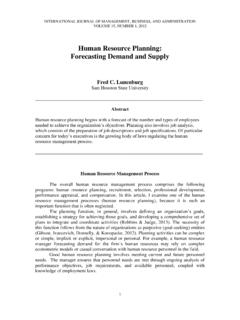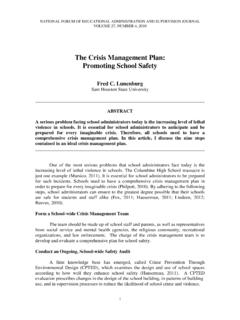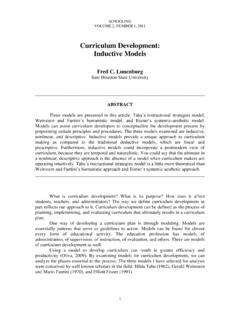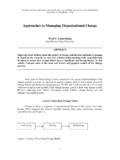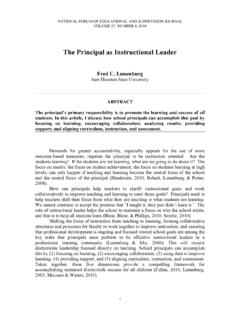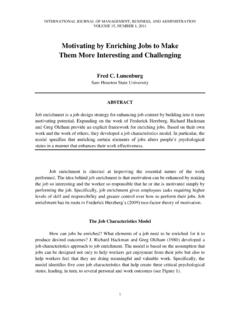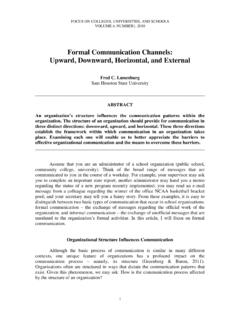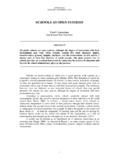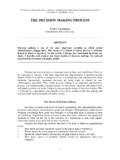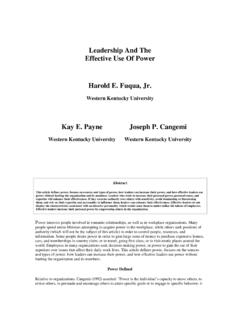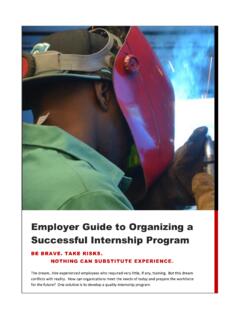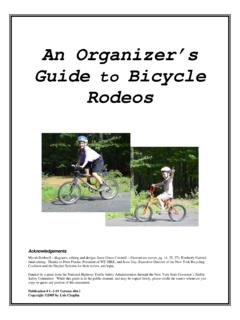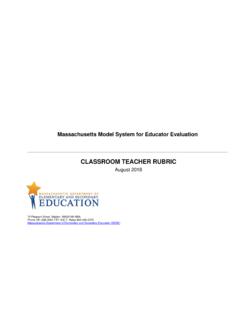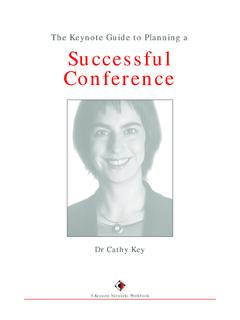Transcription of Curriculum Development: Deductive Models
1 SCHOOLING VOLUME 2, NUMBER 1, 2011 1 Curriculum Development: Deductive Models Fred C. Lunenburg Sam Houston State University _____ ABSTRACT Three Models are presented in this article: Tyler s behavioral model, Beauchamp s managerial model, and Saylor, Alexander, and Lewis s administrative model. Models can assist Curriculum developers to conceptualize the development process by pinpointing certain principles and procedures. The three Models examined are Deductive , linear, and prescriptive. Most Curriculum makers adhere to all three approaches.
2 The administrative model is a little more theoretical than the behavioral or managerial approaches. _____ Much of the professional literature stresses the need for supervisors and administrators to become more involved in Curriculum development. The need to plan effective curricula is obvious, because Curriculum is considered the heart of schooling. The difficulty, however, is that not everyone agrees what Curriculum is or what is involved in Curriculum development. What is Curriculum development?
3 In its most simplified form, Curriculum development is the process of planning, implementing, and evaluating Curriculum that ultimately results in a Curriculum plan. One way of developing a Curriculum plan is through modeling. Models are essentially patterns that serve as guidelines to action. Models can be found for almost every form of educational activity. The education profession has Models of administration, of supervision, of instruction, of evaluation, and others. There are Models of Curriculum development as well.
4 Using a model to develop Curriculum can result in greater efficiency and productivity (Oliva, 2009). By examining Models for Curriculum development, we can analyze the phases essential to the process. The three Models I selected for analysis were conceived by well known scholars in the field: Ralph W. Tyler (1949), George Beauchamp (1981), and J. Galen Saylor, William M. Alexander, and Arthur J. Lewis (1981). The Models are Deductive ; they proceed from the general ( , examining the needs of society) to the specific ( , specifying instructional objectives).
5 Furthermore, the Models are linear; they involve a certain order or sequence of steps from beginning to end. Linear Models need not be immutable sequences of steps, however. Curriculum SCHOOLING 2_____ makers can exercise judgment as to entry points and interrelationships of components of the model. Moreover, the three Models are prescriptive; they suggest what ought to be done and what is done by many Curriculum developers. Tyler: Behavioral Model Probably the most frequently quoted theoretical formulation in the field of Curriculum has been that published by Ralph Tyler in 1949.
6 Tyler stated his Curriculum rationale in terms of four questions that, he argued, must be answered in developing any Curriculum plan of instruction: 1. What educational purposes should the school seek to attain? 2. What educational experiences can be provided that will likely attain these purposes? 3. How can these educational experiences be effectively organized? 4. How can we determine whether the purposes are being attained? These questions may be reformulated into a four-step process: stating objectives, selecting learning experiences, organizing learning experiences, and evaluating the Curriculum .
7 The Tyler rationale is essentially an explication of these steps. Figure 1 outlines Tyler s conceptual framework. He proposes that educational objectives originate from three sources: studies of society, studies of learners, and subject-matter specialists. These data systematically collected and analyzed form the basis of initial objectives to be tested for their attainability and their efforts in real Curriculum situations. The tentative objectives from the three sources are filtered through two screens: the school s educational philosophy and knowledge of the psychology of learning, which results in a final set of educational objectives.
8 Figure 1. Designing the Curriculum a behavioral approach. Sources of Objectives Society Learners Subject matter Screens Tentative objectives Philosophy Final objectives Learning experiences Evaluation Psychology FRED C. LUNENBURG _____3 Once the first step of stating and refining objectives is accomplished, the rationale proceeds through the steps of selection and organization of learning experiences as the means for achieving outcomes, and, finally, evaluating in terms of those learning outcomes. Tyler recognizes a problem in connection with the selection of learning experiences by a teacher or Curriculum designer.
9 The problem is that by definition a learning experience is the interaction between a student and her environment. That is, a learning experience is to some degree a function of the perceptions, interests, and previous experiences of the student. Thus, a learning experience is not totally within the power of the teacher to select. Nevertheless, Tyler maintains that the teacher can control the learning experience through the manipulation of the environment, which results in stimulating situations sufficient to evoke the kind of learning outcomes desired.
10 The final step in Tyler s rationale, evaluation is the process of determining to what extent the educational objectives are being realized by the Curriculum . Stated another way, the statement of objectives not only serves as the basis for selecting and organizing the learning experiences, but also serves as a standard against which the program of Curriculum and instruction is appraised. Thus, according to Tyler, Curriculum evaluation is the process of matching initial expectations in the form of behavioral objectives with outcomes achieved by the learner.
